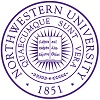专业详情
i) To provide students with training in the practical skills needed to become a painting conservator through practical work guided by specialist supervision and by participating in/performing of research on art works treated in the Hamilton Kerr Institute’s commercial studio;
ii) To educate students of proven aptitude to become painting conservators of the highest standard and to provide them with the means to contribute to research in the field of easel paintings conservation, technical art history, heritage science and preventive conservation;
iii) To provide a stimulating environment in which students can reach their full practical and intellectual potential;
iv) To provide students with academic research and writing skills;
v) To enable students to develop a wide range of intellectual abilities and skills which will enable them to make a significant contribution to research and communication/dissemination of their professional work.
Learning Outcomes
Knowledge and understanding
On completion of the course, students will have acquired knowledge in and understanding of:
• Historical painting techniques and materials and the structure of paintings;
• The science of materials, theory of conservation, historical contexts and ethical issues;
• Conservation documentation processes and imaging techniques;
• Preventive conservation, including environmental control measures and IPM;
• The technical and analytical examination of paintings;
• Methodologies for technical art history research including knowledge of primary sources on painting techniques;
• All health and safety considerations for conservators: Risk Assessments, the Safety Code of Practice under the 1988 Control of Substances Hazardous to Health (COSHH), manual handling, the safe use of tools and workshops.
Skills and other attributes
On completion of the course, students will have acquired:
• Practical skills in the conservation of easel paintings – cleaning, restoration and structural treatment of paintings on canvas, panel and copper;
• Practical skills in preventive conservation measures through the creation of suitable environmental conditions for painting collections; packing and transport of paintings, framing methods;
• Skills in assessing paintings to make ethical decisions on conservation treatments and producing time and cost estimates for the required work;
• Oral and written presentation skills and experience in presenting conservation treatments and research to both specialist and non-specialist audiences;
Transferable skills:
building a CV, making business plans for private practice, developing public engagement and dissemination programmes for cultural heritage institutions/educational programmes etc.; communication skills for working in (interdisciplinary) teams.


